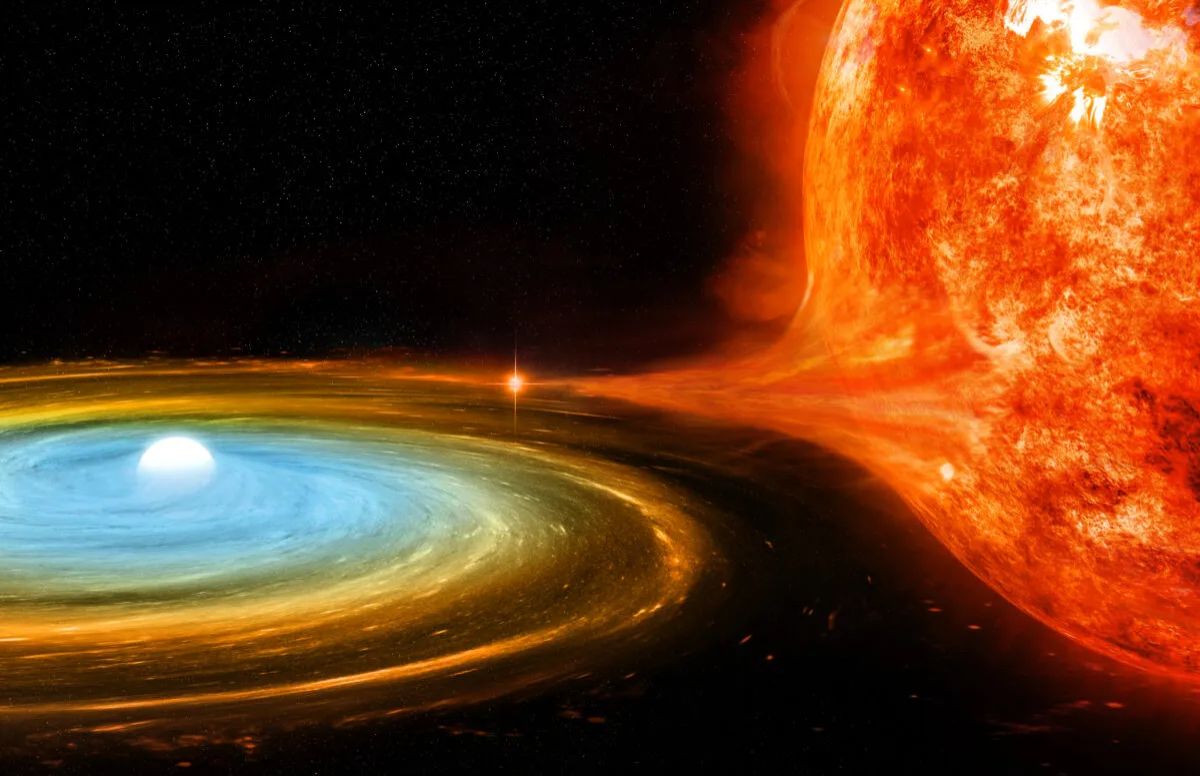Follow us on Google News (click on ☆)
Located about 3,000 light-years away from Earth, this star offers a unique opportunity to witness a massive explosion visible to the naked eye, in the constellation of Corona Borealis. This event, observable approximately every 80 years, results from an explosive interaction between two stars in a binary system, promising an unforgettable observation experience for amateur astronomers.

Artist's impression of a white dwarf capturing material from its red giant partner.
Credit: NASA/CXC/M.Weiss
The system consists of a white dwarf and a red giant, nearing the end of its life, whose exchanges of material periodically trigger a violent nuclear explosion.
These recurrent novas are rare, with only about ten known in our galaxy and its neighbors. Their peculiarity lies in a tight gravitational dance, where the material expelled by the red giant accumulates on the white dwarf until it triggers a thermonuclear reaction.
This event was observed for the first time in 1866 and reappeared in 1946. This year will thus mark at least the third time humanity will witness it. Researchers, including Sumner Starrfield from Arizona State University, are eagerly awaiting this nova, working hard to predict the discoveries that will result from it.
The James Webb Space Telescope, among other instruments, will turn towards this stellar explosion, although its beauty can be appreciated without advanced equipment. Simply looking towards Corona Borealis will allow one to witness this nova.